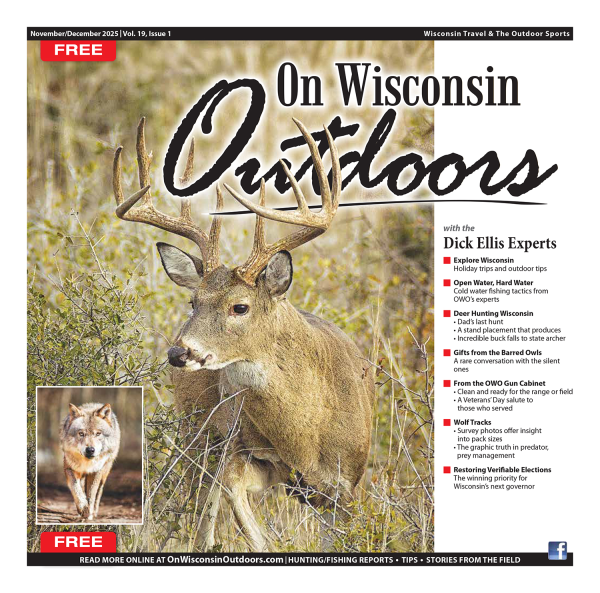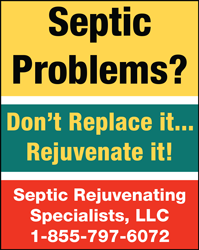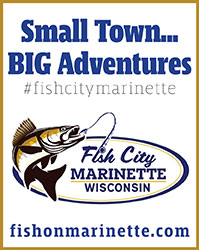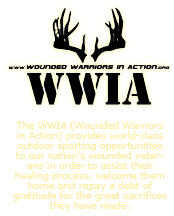DNR Weekly News Update for May 21, 2019
Published - May 21, 2019 by the Central Office
- Free Fun Weekend is June 1-2
- Wild Wisconsin - Off the Record podcast relaunches with new episodes on Wisconsin's outdoors
- Piping plovers arriving this spring to habitat help and nest protection
- Progress made across the state in repairing flood and storm damage
- DNR seeking citizen reports of turtle road crossing hotspots, help in nest protection
- Trout Management Plan available for public comment
- Initial Public Meetings Set for Southwest Savanna Regional Master Plan
- DNR hiring full-time conservation wardens to work at busiest parks, forests
- Public asked to provide input on Great Lakes beach listings
- Motorists and ATV/UTV riders urged to share the road safely
- June 1 deadline to sponsor 2019 Gun Deer Hunt for Hunters with Disabilities
Free Fun Weekend is June 1-2
Contact(s): Paul Holtan, DNR Office of Communications, 608-267-7517
Free fishing and free admission to state parks and trails among offerings
MADISON - Free Fun Weekend is June 1 and 2 in Wisconsin, so save the date and get ready to get outdoors.
On June 1 and 2, Wisconsin residents and visitors can fish for free, hike or bike state trails for free, enjoy free admission to state parks and forests and ride public ATV trails for free.
"Wisconsin is a beautiful playground, especially in summer," said DNR Secretary-Designee Preston Cole. "Not many states can boast the array of natural recreation opportunities we have here. Fun Free Weekend is the perfect time to enjoy our state parks, forests and trails. I urge you to get out and explore, you might just like it."
On Free Fun Weekend, June 1-2, 2019:
- No fishing license is needed to fish any waters. This includes inland trout and Great Lakes trout and salmon fishing, which normally would require a trout stamp in addition to a license. Fishing rules such as limits on the size and species of fish that can be kept do apply, however.
- All state trail pass fees on all DNR-owned state trails are waived and cooperatively-run state trails also may waive fees.
- All state park vehicle admission sticker fees on all DNR-owned properties are waived.
- ATV registration and trail pass fees are waived.
Free fishing equipment is available for loan at more than 50 state parks, DNR offices, and partner organizations, and free fishing clinics are scheduled at many state parks and popular waters, including Harrington Beach and High Cliff state parks and the Northern Unit of the Kettle Moraine State Forest.

Kayak demonstrations are one of the activities taking place at Discovery Day at Pike Lake during Free Fun Weekend.Photo credit: DNR
In addition, on Saturday, the Friends of the Pike Lake Unit of the Kettle Moraine State Forest are holding Discovery Day with geocaching, archery, t-shirt painting, a wildlife show, kayak demos, telescope viewing, fishing and hiking. This event concludes with a grand opening ceremony and dedication of the new outdoor amphitheater featuring live music and guest speakers. The Red Cedar State Trail will host a Trail Day in honor of National Trails Day at the Menomonie Depot Visitor Center located at the trailhead adjacent to Riverside Park with bike safety checks, helmet safety demonstrations, arts and crafts and more.
Free Fun Weekend is also a terrific opportunity to participate in Wisconsin State Parks' OutWiGo initiative, promoting good health through the great outdoors. Be sure to tag your Free Fun Weekend photos with #OutWiGo.
More information about free fun weekend in Wisconsin's outdoors is available on the DNR website. Go to dnr.wi.gov and search "free fun." More events can be found by searching for "Get Outdoors" and then entering "Free Fun" in the search window.
And, people can follow DNR on social for media for more updates between newsletters. DNR has social media platforms on Facebook, Instagram, Twitter, YouTube and Pinterest.
________________________
Wild Wisconsin - Off the Record podcast relaunches with new episodes on Wisconsin's outdoors
Contact(s): Sarah Hoye, DNR communications director, 608-267-2773
MADISON - The public can get the latest information about outdoor recreation in Wisconsin in the first episode of the Department of Natural Resources' relaunch of the agency's podcast: Wild Wisconsin - Off the Record.
The first episode launched May 20 and features DNR secretary-designee Preston Cole, Tourism secretary-designee Sara Meaney and Ben Bergey, DNR Parks & Recreation bureau director, with a focus on all things travel and outdoor recreation in Wisconsin.

The shot tower at Tower Hill State Park is one of the unique places to explore in Wisconsin State Parks discussed in the Wild Wisconsin - Off the Record podcast.Photo credit: Wisconsin Historical Society
"We're very excited to relaunch our podcast and give the public yet another opportunity to explore Wisconsin's outdoors through our social and digital media," said Sarah Hoye, DNR communications director. "The DNR has an array of amazing employees doing interesting, crucial work, and with Off the Record, gives the public front-row access to our expert staff and partners."
The podcast team has been on hiatus working behind-the-scenes to bring fresh, new content to listeners.
"We made some changes, including shorter episodes and the addition of a new host. What we did not change was finding you inside voices on Wisconsin's outdoors. Whether you live to hunt, enjoy spending time on the water or you're someone who likes to take a walk after supper, there's a little something here for everyone, Hoye said.
Coming up, we have episodes on keeping wildlife wild, fishing for dinner, cougars in Wisconsin, new ways to enjoy our state parks and much more.
To listen and subscribe to Wild Wisconsin - Off the Record on iTunes, Spotify, PodBean or Stitcher, find links by searching the DNR website, dnr.wi.gov, for "connect."
________________________
Piping plovers arriving this spring to habitat help and nest protection
Contact(s): Reena Bowman, Fish and Wildlife Service, 920-866-1720, Sumner Matteson, DNR, 608-225-0586, Julie Van Stappen, National Park Service, 715-779-3398 ext. 1601, Eric Andrews, Bad River Band of the Lake Superior Chippewa, 715-682-7123 ext. 1562
SUPERIOR, Wis. - The first endangered piping plovers are returning to Wisconsin this month as partners work to protect the birds' habitat in hopes of boosting nesting success.
Typically, piping plovers need large isolated beach and dune habitats. Flooding in 2018 washed away nests and along with suspected predation contributed to a low total of chicks fledging from Wisconsin's longtime nesting site on Chequamegon Point in the Apostle Islands. Predation may have also taken a toll on a more recent plover nesting site in lower Green Bay.

Endangered piping plovers are benefitting from more nest protection and habitat creation this summer.Photo credit: Ryan Brady
"Last year was a tough year for piping plovers in Wisconsin, but Wisconsin plays an important role in the overall recovery effort, and partners are energized for the upcoming season and are working together to protect important habitat and monitor nesting pairs," said Reena Bowman, a U.S. Fish and Wildlife Service Biologist.
As a result of concerted protection efforts by the National Park Service, Bad River Band of the Lake Superior Chippewa, DNR, U.S. Fish & Wildlife Service and The Nature Conservancy, nearly 100 piping plover chicks have been produced at Chequamegon Point. This year, partners at the Chequamegon Point site will be stepping up efforts to protect piping plover nests from unleashed dogs, which pose a threat to piping plover nesting success and chick survival. Chequamegon Point is part of Apostle Islands National Lakeshore, where dogs are required to be on a 6-foot or shorter leash at all times.
In 2016, piping plovers nested in lower Green Bay for the first time in 75 years on the Cat Island Chain restoration project. The project is ongoing and is being completed in partnership with local, state, and federal partners. Twelve piping plover chicks have fledged from the site to date. For the upcoming seasons, partners will work together to maintain suitable piping plover habitat, protect nests, and monitor for predators.
Endangered Piping Plover Gets a Boost in Wisconsin
Other efforts in 2019 to benefit piping plover include adding potential nesting habitat to another site near Superior. The site, the Wisconsin Point Bird Sanctuary, is owned by DNR and the project will improve habitat for the birds along 1,700 feet of the St. Louis River shoreline and eight acres of foraging and nesting habitat. The project is funded by the EPA and designed and constructed by the U.S. Army Corps of Engineers in conjunction with DNR.
Piping plovers once nested along the shores of all the Great Lakes but habitat loss, recreational pressure, and predation likely contributed to serious declines. By 1948, only one pair of plovers was known to nest in Wisconsin and the piping plover was added to the state endangered species list in 1979. Across the Great Lakes region, the loss of habitat caused numbers to drop below 20 nesting pairs region-wide before the small shorebird was listed as federally endangered in 1985.
Report sightings of banded piping plovers
The public can help piping plover recovery efforts by reporting their sightings of piping plovers with metal and color bands on their legs. The color codes vary according to the location where they were banded. By getting reports of the birds' whereabouts, the recovery partners can better understand the birds' migratory routes, the habitats they use, and their survivorship. For more information on piping plovers and how to report your sightings of banded piping plovers, search the DNR website, dnr.wi.gov, for "piping plover."
________________________
Progress made across the state in repairing flood and storm damage
Contact(s): Missy Vanlanduyt, Wisconsin State Parks, 608-266-7617 or Paul Holtan, DNR Office of Communications, 608-267-7517
Some closures remain on properties that suffered most severe damage
MADISON - Visitors to Wisconsin state parks, trails and forests this summer will find many repairs have been made to the nearly $8 million in damage to properties in a series of storms and flooding events that hit last summer.
They will also find that some of the properties that suffered the most severe damage will still have some closed areas while major repairs continue to be underway.
Between June and September last year, 32 state properties in 21 counties sustained nearly $8 million in damage due to rain, flooding and tornado events. Heavy rains across northwestern Wisconsin in June and again in August caused significant damage at Amnicon Falls and Pattison state parks, including the washing out of Highway 35 above the dam at Pattison, which drained Interfalls Lake.
The hiking trails upstream of Interfalls Lake, sustained so much damage that they remain closed this year. Access to Little Manitou Falls is only by parking in the nearby lot and walking a short distance to the falls. The beach is closed due to the mandatory order to keep the dam gate open until the dam is found to be safe. Most trails to Big Manitou Falls have re-opened. Hikers are encouraged to utilize the ski trails for additional opportunities to enjoy the outdoors. DNR staff, on all levels, are working on plans to fix the damaged trails. Amnicon Falls State Park has nearly all areas open to visitor enjoyment.
Also in late August, heavy rains and storms caused the temporary closure of Wildcat Mountain State Park in Vernon County and approximately half of the Long Lake campground in the Northern Unit of the Kettle Moraine State Forest in Fond du Lac County, where the National Weather Service confirmed a tornado had touched down.


Sections of the Elroy-Sparta State Trail have reopened after major washouts from last summers flooding were repaired.Photo credit: DNR
A number of state trails also suffered major washouts, closing sections of trails in both northern and southern Wisconsin.
"We've made great progress in making repairs at many of our properties across the state," said Ben Bergey, Wisconsin State Park System director. "We still have some repairs to make, so visitors will still find some closed areas. The good news is that because we have so many properties offering recreational opportunities there are plenty of alternatives for people to enjoy."
The Kettle Moraine campground, Wildcat Mountain and Amnicon Falls state parks are completely repaired and open. Highway 35 over the dam at Pattison State Park was repaired and temporary repairs were made to the dam. Interfalls Lake will remain drawn down until permanent repairs can be made to the dam, which are expected to be completed by late 2019 or early 2020. There are a number of Douglas County parks nearby that offer swimming beaches and there are 16 public beaches on Lake Superior in Douglas County (both links exit DNR). The campground and access to both Big Manitou and Little Manitou water falls are open as well.
Repairs have been made to Badger, Sugar River and Military Ridge state trails. Repairs have been made to sections of the Elroy-Sparta State Trail, Wisconsin's renowned first rail-trail in the nation, but the trail remains closed from Norwalk to Elroy. The segments from Norwalk to Wilton and Kendall to Elroy will be open by early Fall 2019, though the segment from Kendall to Wilton will remain closed for the season.
Other trail closures include:
- The 400 State Trail will be closed this summer from Wonewoc to Union Center. The trail from Reedsburg to La Valle and Elroy to Wonewoc is open.
- The Hillsboro State Trail is currently closed in its entirety until repairs can be made.
Check the DNR website for current condition updates as sections of trails will be opening as they are repaired throughout the season.

The flooding damaged several bridges on the 400 State Trail.Photo credit: DNR
There are many other trails that remain open, including 11 miles of the Elroy-Sparta State Trail from Sparta to Norwalk, including Tunnel #3. The damage at above-mentioned segments are significant in nature and will be designed and repaired in 2019, with a plan to be open for use in 2020. The public is asked to not enter closed areas as these areas have significant hazards and crews will be working in these areas with heavy equipment.
Other opportunities to hike and bike state trails in the area include the Great River, La Crosse River, and Great Sauk state trails as well as countless loop trails at other state and county properties.
The Saunders State Trail in Douglas County will also be closed for the summer due to flood damage; however, segments of the Gandy Dancer State Trail are expected to open throughout the summer. Visit www.douglascountywi.org for the most current conditions. The Gandy Dancer State Trail in Burnett and Polk counties are in good condition and open biking and other outdoor recreation opportunities.

A section of the 400 State Trail reopened this week after bridges were repaired.Photo credit: DNR
The Wild Rivers State Trail in Douglass County is also open and has opportunities for ATV and horseback riding as well as hiking and off-road biking.
"Staff from the Wisconsin State Park System and other Wisconsin Department of Natural Resources programs have worked hard since the June and August storms to repair hundreds of areas of damage," Bergey said. "Unfortunately, there are still some significant areas of repair needed but countless other areas have been repaired in the last year. We thank the public for their patience as we continue to work repairing flood and storm damaged areas and get them open for the enjoyment of the public."
For information on other recreational opportunities, search the DNR website, dnr.wi.gov, for "Explore Outdoors," which provides a searchable database of DNR properties and activities. For more about state parks, trails, forests and recreation areas search "Parks," or "Find a Park."
________________________
DNR seeking citizen reports of turtle road crossing hotspots, help in nest protection
Contact(s): Andrew Badje, DNR Natural Heritage Conservation biologist, 715-921-5886
MADISON - As female turtles start leaving the water in search of sand or gravel uplands to lay their eggs, Wisconsin conservation biologists are asking people to report where the turtles cross the road and to help protect nests that turtles may build on residential lawns, gardens or gravel driveways.
"Turtles will soon be moving around to lay their eggs in upland areas, and we need your help to make sure as many of them survive as possible and that their eggs do too," said Andrew Badje, who coordinates the Wisconsin Turtle Conservation Program for the DNR Natural Heritage Conservation Program.
"Turtles killed crossing roads and predators eating their eggs are big problems that can endanger turtle populations in Wisconsin. So DNR is once again asking people to report turtle crossing hotspots, and asking people to consider protecting nests on their land with a homemade nest cage," he said.
People can report turtle crossings by searching online for DNR's Wisconsin Turtle Conservation Program website. [exit DNR]
Since DNR started asking for citizens to report deadly road crossings for turtles in 2012, conservation biologists have documented 1,959 turtle crossing locations. Of those, 42 crossings are particularly deadly for turtles, resulting in high levels of mortality that could eventually lead to population collapse if left unchecked. Some species of turtles, like the wood turtle, take 12 to 20 years to reach reproductive maturity, so the death of even a few turtles in a population can take a big toll, Badje said.
"We very much appreciate receiving these citizen reports because they give conservation biologists a great statewide picture of problem crossings," he said. "People live in every corner of Wisconsin and are particularly aware of the turtle crossings in their neighborhoods."
Such data are critical for DNR staff to have when working with local and state highway departments in Wisconsin, Badje said. Citizen reports, for example, allowed DNR to work with the Wisconsin Department of Transportation and University of Wisconsin-Stevens Point to build a wildlife underpass when State Highway 66 just northeast of Stevens Point was reconstructed, a project detailed in the article "Tunnel Vision [PDF]" in the Wisconsin Natural Resources magazine.
The citizen reports also help DNR document previously unknown turtle populations, update the status of known populations for which there is little data and can help DNR property managers use the information to manage for turtles in their areas.
How citizen scientists and communities can protect turtle nests

Take time for turtles
Badje asks that people consider helping turtles by protecting their nests when females lay eggs in residential lawns, gardens, or gravel driveways. Nests in these areas are highly susceptible to predation from raccoons, skunks, coyotes, opossums, and even chipmunks, and once turtles lay their eggs they do not return, leaving the eggs and later hatchlings vulnerable.
Badje suggests creating a 16-inch wide, by 16-inch long, by 8-inch high nest cage using 1-inch high by 2- to 3-inch wide wire fencing material so predators cannot access the eggs concealed underground. More information including pictures are found in this Protecting Turtle Nests [PDF] factsheet.
It's important to bury the cage about 3-inches below the substrate level and stake down all four corners of the cage; such a design allows turtles to hatch and exit on their own, without the need for constant human supervision, he said.
"We understand that taking these steps to protect nests from predators takes a fair amount of time and effort. We are grateful for the help; it is particularly important in urban areas where turtle populations are already threatened by high mortality along busy roads," Badje said.
Find videos and more information about Wisconsin's 11 native turtle species and other ways to help them, on DNR's Wisconsin Turtle Conservation Programwebsite.
________________________
Trout Management Plan available for public comment
Contact(s): Joanna Griffin, trout coordinator, 608-264-8953
MADISON - A draft plan that will provide direction for inland trout management in Wisconsin is now available for review and comment on the Wisconsin Department of Natural Resources website. The public will also have opportunities to review and comment on the plan at a series of public meetings that will be held around the state.
The DRAFT Inland Trout Management Plan, 2020-2029 covers brook trout, brown trout, rainbow trout and lake trout in inland lakes, ponds and streams of Wisconsin. This includes tributaries of the Great Lakes upstream from the first impassable barrier such as a dam and naturally occurring falls.

A brown trout caught from a Bohemian Valley trout stream in La Crosse County.Photo credit: DNR
The plan communicates the direction and focus of the DNR Fisheries Program on inland trout management for the next 10 years. Specifically, it guides the allocation of resources, identifies constraints, and prioritizes management activities. This plan addresses many important fisheries management activities such as monitoring and research, habitat improvement, stocking, fishing regulations, land management, and land/easement acquisition.
"We invite all interested members of the public to attend one of these meetings to learn about trout management in Wisconsin and this 10-year statewide management plan," said Joanna Griffin, DNR trout coordinator.
The DNR will be accepting public comments until July 5, 2019. People who are unable to attend a meeting, can submit comments using the Trout Plan public input survey form found on the trout management plan web page.
DNR staff will host four public meetings to review the draft statewide Inland Trout Management Plan. The meetings will be held:
- May 29, La Crosse - 6-8 p.m. La Crosse DNR Service Center, B19-20 (basement conference room), 3550 Mormon Coulee Road. Contact: Kirk Olson 608-785-9017
- June 3, Wausau - 6-8 p.m. Marathon County Public Library, Wausau Community Room, 300 North First St. There is a 3-hour parking limit in the library's main lot. There are nearby parking ramps. Contact: Dave Seibel 715-623-4190 x3112 Note: this meeting is not sponsored by the Wausau County Public Library.
- June 4, Fitchburg - 7-9 p.m. Fitchburg DNR Service Center, Glacier's Edge/Gathering Waters room, 3911 Fish Hatchery Road Contact: Justin Haglund 608-341-9465
- June 5, Spooner - 6-8 p.m. Spooner DNR Service Center, Community Room, RM 112, 810 West Maple St. Contact: Craig Roberts 715-416-0351
________________________
Initial Public Meetings Set for Southwest Savanna Regional Master Plan
Contact(s): Savannah Ernzen, DNR property planner, 608-266-2130; or Paul Holtan, DNR Office of Communications, 608-267-7517
Public invited to participate in small group discussions at June 5 or June 6 meetings. Comment period open through June 25, 2019
NEW GLARUS, Wis. - The public will have an opportunity at two upcoming public meetings to learn more about the master planning process for properties in southwestern and southcentral Wisconsin. The Department of Natural Resources is initiating the public involvement process to help identify issues to be evaluated during the development of the Southwest Savanna Ecological Landscape regional master plan.
A master plan, guided by Chapter NR 44, Wisconsin Administrative Code, establishes the level and type of resource management and public use authorized on department-managed properties. Under the regional master planning process, department staff will develop a plan for all department properties located within the region. The Southwest Savanna region is one of 16 previously described ecological landscapes in Wisconsin. Properties in the region have similar ecological attributes and management opportunities.

Yellowstone Lake State Park is one of the properties included in the Southwest Savannah Ecological Landscape mater planning process.Photo credit: DNR
The Southwest Savannah Ecological Landscape covers all of Lafayette County, and portions of Grant, Green, Iowa, and Dane counties. It includes state parks, state trails, state natural areas, fish and wildlife areas, and Southwest Grassland & Stream Conservation Area. Yellowstone Lake, New Glarus Woods, and Belmont Mound State Parks are popular state parks included in this planning effort. State trails, including Badger State Trail and Sugar River State Trail, will also have master plans developed. The Blue Mound State Park master plan is being developed separate from this process.
The public will have an opportunity to give input and share ideas on the future recreation and resource use and management of properties within the Southwest Savanna Region at two upcoming public meetings. They will be held from 6 to 8 p.m.:
- June 5, New Glarus - New Glarus Village Hall, 319 2nd St.
- June 6, Mineral Point - Mineral Point City Hall, 137 High St.
Each meeting will have a brief presentation at 6:15 p.m. followed by an interactive discussion activity. During the activity, the public will identify key management issues that should be addressed in the master plan. The meetings will cover the same information; you are welcome to, but do not need to attend both.
People are also encouraged to visit the Southwest Savanna Master Plan website by going to the DNR website, dnr.wi.gov, searching keywords "property planning" and choosing "Southwest Savanna" in the "Choose a Region" dropdown menu. In addition to opportunities to learn more about Southwest Savanna and the planning process, an online public input form is also available.
"We welcome everyone to visit our website and attend a public meeting to share their perspective on future use and management of Southwest Savanna properties and to learn about the department's property master planning process." said Diane Brusoe, Property Planning Section Chief.
In addition to the opportunities to offer input online or at public meetings, people may contact DNR property planner Savannah Ernzen by email at savannah.ernzen@wisconsin.gov, phone at 608-266-2130, or US mail at Savannah Ernzen, Wisconsin DNR, P.O. Box 7921, Madison, WI, 53707-7921. The initial public comment period is open through June 25, 2019.
________________________
DNR hiring full-time conservation wardens to work at busiest parks, forests
Contact(s): Lt. Jeffrey King 608-219-4887 or Jeffrey.king@wi.gov
Part-time positions may also be an option
MADISON -- The Wisconsin Department of Natural Resources Bureau of Law Enforcement is hiring its 2020 Class of Conservation Wardens whose primary responsibility will be to deliver law enforcement services on the nine busiest state parks and forests in Wisconsin.
The department is looking to hire 11 full-time wardens; and, those interested in part-time positions also are encouraged to apply. Also, those already working in law enforcement may be eligible for new compensation policies for incoming officers.
"Hiring 11 full-time conservation wardens who will focus primarily on state parks and forest law enforcement is a first," Jeffrey King assistant training director for the DNR Bureau of Law Enforcement said.
King said people more interested in part-time conservation warden work should apply for the full-time position. "This year we will be inviting candidates from the applicants for the full-time position to compete for both full-time and part-time positions."
The 2020 class tentatively would start the training program on October 27 of this year.
"Do you want a career that is part of something big?" King said. "Apply now! Wisconsin DNR Conservation Wardens protect our natural resources, our state parks and forests, the environment, and the people who enjoy resource rich Wisconsin."
More information about applications is available on the state of Wisconsin Wisc.Jobs website.
For more information, search the DNR website, dnr.wi.gov, for "Warden Recruitment."
________________________
Public asked to provide input on Great Lakes beach listings
Contact(s): Madeline Magee, 608-266-5228, madeline.magee@wisconsin.gov
MADISON - People who enjoy Wisconsin's Great Lakes beaches have an opportunity to submit comments to the Wisconsin Department of Natural Resources regarding the current listing of coastal beaches and boat launches. The agency would like to hear whether people feel any beaches are missing or not properly identified on the Wisconsin beach list; whether there are some boat launches that are no longer active and should be omitted; and whether there are any concerns with additions, removals or consolidated listings.

Lake Michigan beach at Harrington Beach State Park.Photo credit: DNR
"Public comments ensure the Wisconsin beach list reflects locally used names along with the status of beaches and boat launches due to changing natural conditions and public access," said Madeline Magee, Wisconsin beach program manager.
To maintain eligibility for funding under the federal BEACH Act, state programs must provide an opportunity for public comment when changes to the list or monitoring program occur. The current list includes some new beaches and changes or repairs to existing beaches.
The U.S. Environmental Protection Agency requires all Wisconsin beaches along the Lake Michigan and Lake Superior shorelines to be identified and prioritized for water quality monitoring. A "beach" is defined as any place that the public has recreational access to the water, regardless of whether the location is used for swimming. Boat launches, some natural areas, and private beaches available to the public are included.
Public comments on the listings and potential program changes should be emailed to madeline.magee@wisconsin.gov. For more information, visit dnr.wi.gov and search "beaches."
________________________
Motorists and ATV/UTV riders urged to share the road safely
Contact(s): Joanne Haas, DNR Law Enforcement, 608-209-8147, Joanne.Haas@Wisconsin.gov
Stay alert as the weather warms and riding conditions improve
[EDITOR'S ADVISORY: This news release is being issued jointly with the Wis. Dept. of Transportation.]
MADISON --Spring and summer in Wisconsin are great times to take the family on a road trip or hop on an all-terrain or utility-terrain vehicle (ATV/UTV) for some outdoor fun. The Wisconsin Department of Transportation and Department of Natural Resources are asking everyone - no matter what they're operating - stay attentive, patient and safe.
ATV/UTV registration grew 19 percent over the past five years, totaling 396,611 at the end of 2018. Motorists and riders could be sharing the road more frequently in some areas. State law allows municipalities to designate their roadways as ATV/UTV routes. In addition, a municipality may authorize the operation of ATVs/UTVs on any highway within its territorial boundary that has a speed limit of 35 mph or less.
"ATVs, UTVs, cars and trucks offer different driving experiences, but one factor holds consistently true - no matter what you drive, even a momentary distraction can create a tragedy," said WisDOT Secretary-Designee Craig Thompson. "It's important that we all look out for one another."
WisDOT published a website for riders and local officials who are interested in learning more about the 2017 law changes and requirements to establish ATV routes within their jurisdiction. The website also contains a downloadable flier [PDF] for anyone who'd like to encourage motorists and riders to share the road. The DNR publishes additional resources to assist ATV and UTV riders with safety courses, vehicle registration and knowledge of the law.
"Whether you're behind the wheel or behind a set of handlebars - think safety," said DNR Recreation Safety and Outdoor Skills Captain April Dombrowski. "ATV/UTV riding is among our state's favorite recreational activities in the summer months. Whether you are riding for work or for fun, stay safe and be responsible."
Safety tips for motorists:
- Watch for riders. Always eliminate distractions. Be patient and stay focused.
- When you approach an ATV/UTV on the road, slow down and be patient for a safe opportunity to pass.
- As ATV/UTVs are much wider than bicycle or motorcycle, motorists are likely to require space from the opposing travel lane while passing.
- Keep an eye out for ATV route signs and remember the law allows postings at territorial boundaries so motorists may not see additional signage along individual roads.
Safety tips for ATV/UTV riders:
- Stick to authorized areas. Most highways and roads statewide remain off limits. Check for ATV/UTV route signs or with local authorities to see if certain highways and roads are legally open.
- Travel at an appropriate speed and remain aware of your surroundings.
- Consider wearing high-visibility gear. As some drivers might not expect to be sharing the road with an ATV/UTV, it can help to be seen from afar.
- Riders are required to operate headlight(s) when on or around roadways.
- Helmets and protective gear save lives and are highly encouraged for everyone, but also are a legal obligation for riders and passengers under 18 with limited exceptions. Get the facts here [PDF].
- All UTV riders and passengers must have seatbelts fastened at all times.
- It is illegal for passengers to sit anywhere not specifically designed or intended for passenger use.
- Never consume alcohol or drugs before or during ATV/UTV operation.
________________________
June 1 deadline to sponsor 2019 Gun Deer Hunt for Hunters with Disabilities
Contact(s): Matthew Gross, DNR Assistant Big Game Ecologist, 608-261-7588
MADISON - Sponsors and landowners interested in hosting a special hunting opportunity for disabled hunters are reminded of the fast-approaching June 1 deadline to enroll their lands in the 2019 Gun Deer Hunt for Hunters with Disabilities.

June 1 deadline to sponsor 2019 Gun Deer Hunt for Hunters with DisabilitiesPhoto credit: DNR
Sponsors are encouraged to enroll at least 60 acres of land and must allow at least three hunters to use their land during the Oct. 5 to 13 hunt.
In 2018, more than 81 landowners in 45 counties enrolled roughly 78,000 acres of hunting land, providing opportunities for over 400 participants to enjoy hunting when the weather is more conducive to mobility in the woods for people with special challenges.
For an online application, visit dnr.wi.gov and search for keywords "disabled deer hunt." For a physical application, please contact Matthew Gross, DNR Assistant Big Game Ecologist, at 608-261-7588
A full list of hunt sponsors will be available on the DNR website after June 1. Interested hunters are encouraged to contact sponsors as soon as possible to determine space availability. Each hunter may sign up with no more than one hunt sponsor.
For more information, interested hunters and sponsors are encouraged to contact Gross by phone or e-mail at Matthew.Gross@wisconsin.gov.












